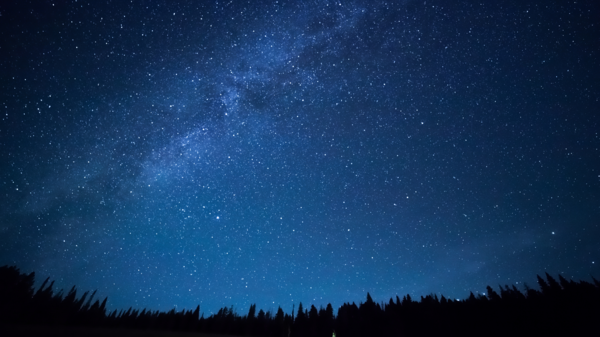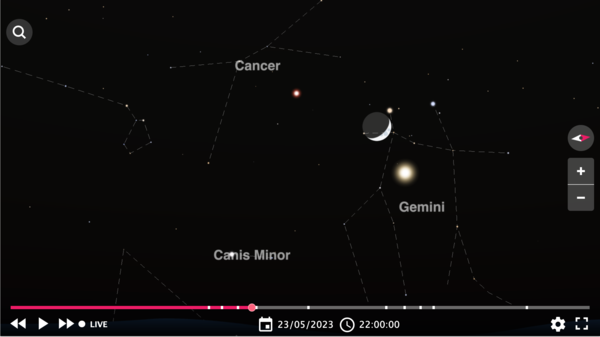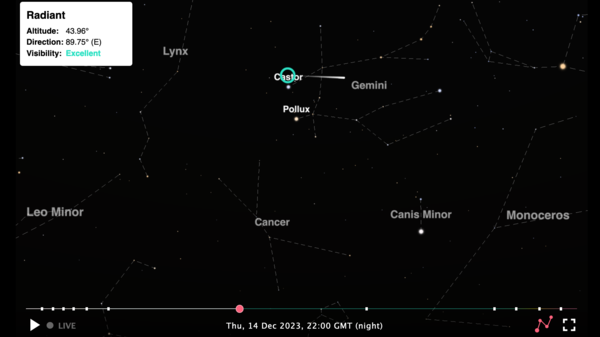Look Up! Astronomy Highlights for 2023
Andrew Fazekas from Astronomers Without Borders picks out five cosmic events to look forward to this year.

From conjunctions to meteor showers, there is much for skywatchers to ‘look up’ and see over the next twelve months.
©iStockphoto.com/VitaliyPozdeyev
What’s Coming Up in 2023?
As always, the biggest astronomy events for our team here at timeanddate will be eclipses.
- On April 20, we’ll be in a remote corner of Western Australia to bring you live coverage of the Ningaloo total solar eclipse.
- Six months later, on October 14, we’ll be in Roswell, New Mexico, for the Great American annular solar eclipse.
What are some other astronomy highlights to watch out for in 2023? We asked Andrew Fazekas from Astronomers Without Borders for his pick of forthcoming sky events.

Also known as the Night Sky Guy, Andrew Fazekas has been watching the skies with the Royal Astronomical Society of Canada since 1983. He’s the Communications Manager at Astronomers Without Borders, and his latest books are Stargazer’s Atlas and Backyard Guide to the Night Sky.
March 2: Venus and Jupiter Conjunction
“This planetary pairing will be hard to miss since both worlds are so brilliant even to the naked eye,” says Andrew. “The views will be dramatic as the planets appear to brush past each other. At their closest encounter, they will appear separated by only a half degree—equal to the disk of the Full Moon. Train your binoculars and telescopes on this conjunction, and you’ll be able to begin to resolve both Venus and Jupiter as disks.”
April 10: Venus Next to the Pleiades Star Cluster
“Anyone with just a pair of binoculars will get to see this super-bright planet in a close encounter with this picturesque star cluster,” reckons Andrew. “Their apparent closeness to each other is, of course, just an optical illusion: while Venus will be a mere 9 light minutes away, the Pleiades—also known as the Seven Sisters—is an impressive 444 light years from Earth.”
Find the planets with our Interactive Night Sky Map
May 22–23: The Moon, Venus, and Mars
Says Andrew: “These three very different worlds will form an eye-catching arc formation on the 22nd. Then on the 23rd, the Moon will glide between the two planets. It’s a great display of celestial mechanics as the Moon’s motion in space is reflected in its changing position in our sky. Bring out your binoculars, and you can also catch sight of a pair of bright stars shining beside the Moon. These are Castor and Pollux, the lead stars of the constellation Gemini.”

The view on our Night Sky Map looking west from New York City at 22:00 (10:00 pm) local time on May 23. Reddish Mars is to the left of the Moon; bright Venus is below. The two bright stars above and to the right are Pollux (closest to the Moon) and Castor.
©timeanddate
August 12–13: Perseid Meteor Shower
“With only a Waning Crescent Moon, there should be skies dark enough to catch a flurry of meteors from most places across the globe. It’s amazing to think that we’re seeing particles shed by a passing comet hit Earth’s atmosphere at speeds of 150,000 kph (95,000 mph), and simply burn up in less than a second.”
Meteor shower calendar and interactive maps
December 14–15: Geminid Meteor Shower
“With a New Moon coinciding so closely with the peak dates of this shower, we can expect an amazing performance,” predicts Andrew. “With darker skies, even the fainter shooting stars should be visible. To get the most out of this sky show, find an observing location away from city lights and with a view of as much of the sky as possible, since meteors will appear to streak across most of the overhead sky.”

Meteor showers appear to originate from a point in the sky called the radiant. It’s shown here as a circle on our Meteor Shower Sky Map, looking east from London (in the UK) on December 14 at 22:00 (10:00 pm) local time. You don’t need to find the radiant to enjoy the show: as Andrew says, meteors will appear to streak across most of the overhead sky.
©timeanddate